“…a place where history, art, and nature come together in a masterful landscape.”
– Peppino Montanaro
Un Patrimonio che Attraversa i Secoli
Nestled on a gentle, breezy hill just fifteen kilometers from Taranto, Masseria Amastuola today appears as an elegant wine resort surrounded by vineyards. Yet stepping through its gates means entering more than a 19th-century estate: it is an immersion into a place that preserves an ancient memory, layered over the centuries and etched into the land and its stones.
The origins of the masseria as we know it date back to the 19th century, when it was built in local limestone following the traditional layout of Apulian farmhouses: a closed courtyard, functional spaces for agricultural life, areas for processing produce, and shelters for livestock. Its solid, austere architecture was both a workplace stronghold and a symbol of Puglia’s rural identity. But the hill of Amastuola held far older traces—remnants that would unveil a surprising past.
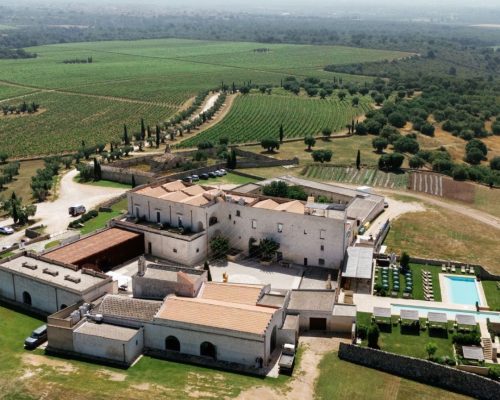
Ancient Roots: Greeks and Iapygians on the Hill of Amastuola
Research conducted by the University of Amsterdam under the guidance of Prof. Gert-Jan Burgers has placed the hill of Amastuola at the center of a significant investigation into prehistoric human settlement. Between the 8th and 7th centuries BC, the area was home to a community where Greeks and Iapygians (the indigenous people of Apulia) lived side by side in a relationship of proximity and mutual respect, sharing agricultural practices and rituals while maintaining distinct spaces.
This discovery established Amastuola as a reference site in the debate on Greek colonization in Italy and on the complex interactions between colonizers and local populations. The first evidence emerged from stratigraphic excavations carried out by the Soprintendenza in the 1980s and later expanded by Burgers. These revealed the remains of an archaic settlement: huts, indigenous defensive structures, and, not far away, Greek-style tombs with refined grave goods.
The findings suggest that the settlement was not the result of a forceful conquest by the Greeks. Instead, the simultaneous presence of geometric-indigenous ceramics and locally built structures points to peaceful coexistence and a meaningful cultural interaction.
A short distance from the settlement lie archaic necropolises, with tombs carved directly into the rock, containing Proto-Corinthian and Corinthian Greek pottery. From these burials come some of the precious artifacts now preserved in the National Archaeological Museum of Taranto (MARTA), including the celebrated Ori di Taranto. These exquisite jewels, masterpieces of elevated artistic culture, tell the story of the intertwining between indigenous traditions and Hellenic influences.
Burgers, Gert-Jan & Crielaard, Jan Paul (2012). Greek Colonists and Indigenous Populations at L’Amastuola, Southern Italy. BABESCH, 87, pp. 69–106. DOI: 10.2143/BAB.87.1.2020763
Il Restauro: Quando la Pietra Torna a Parlare
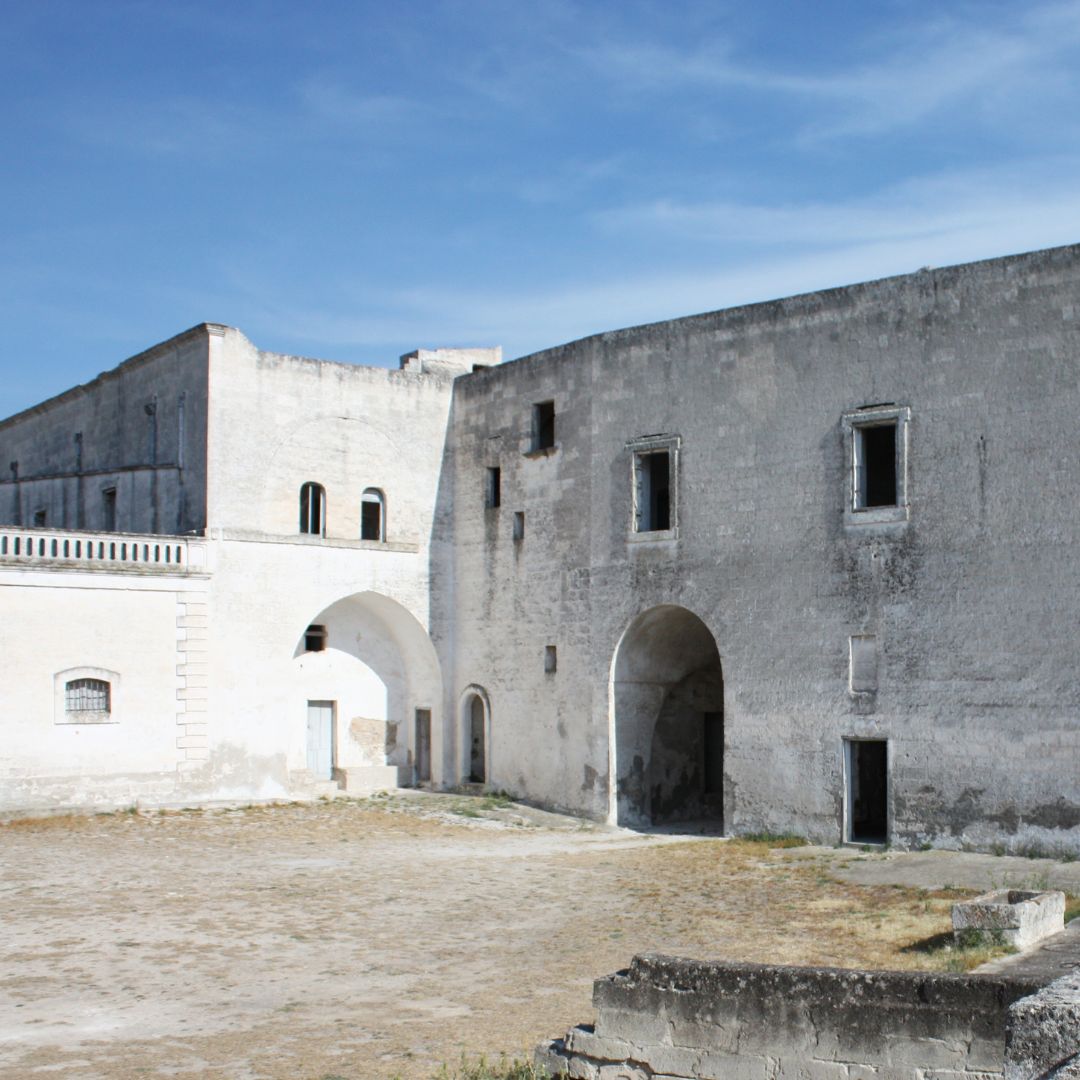
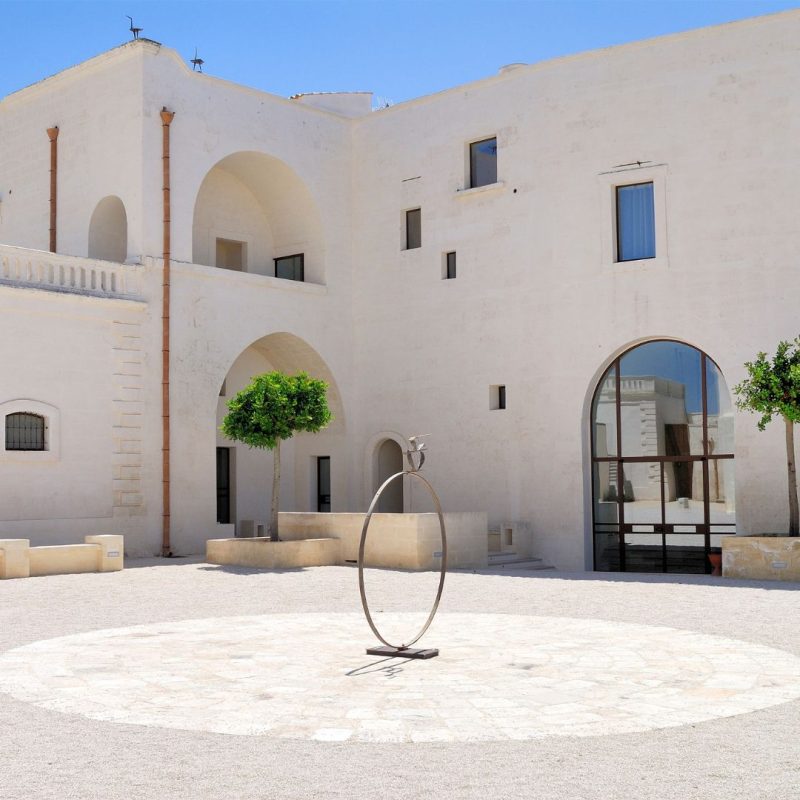
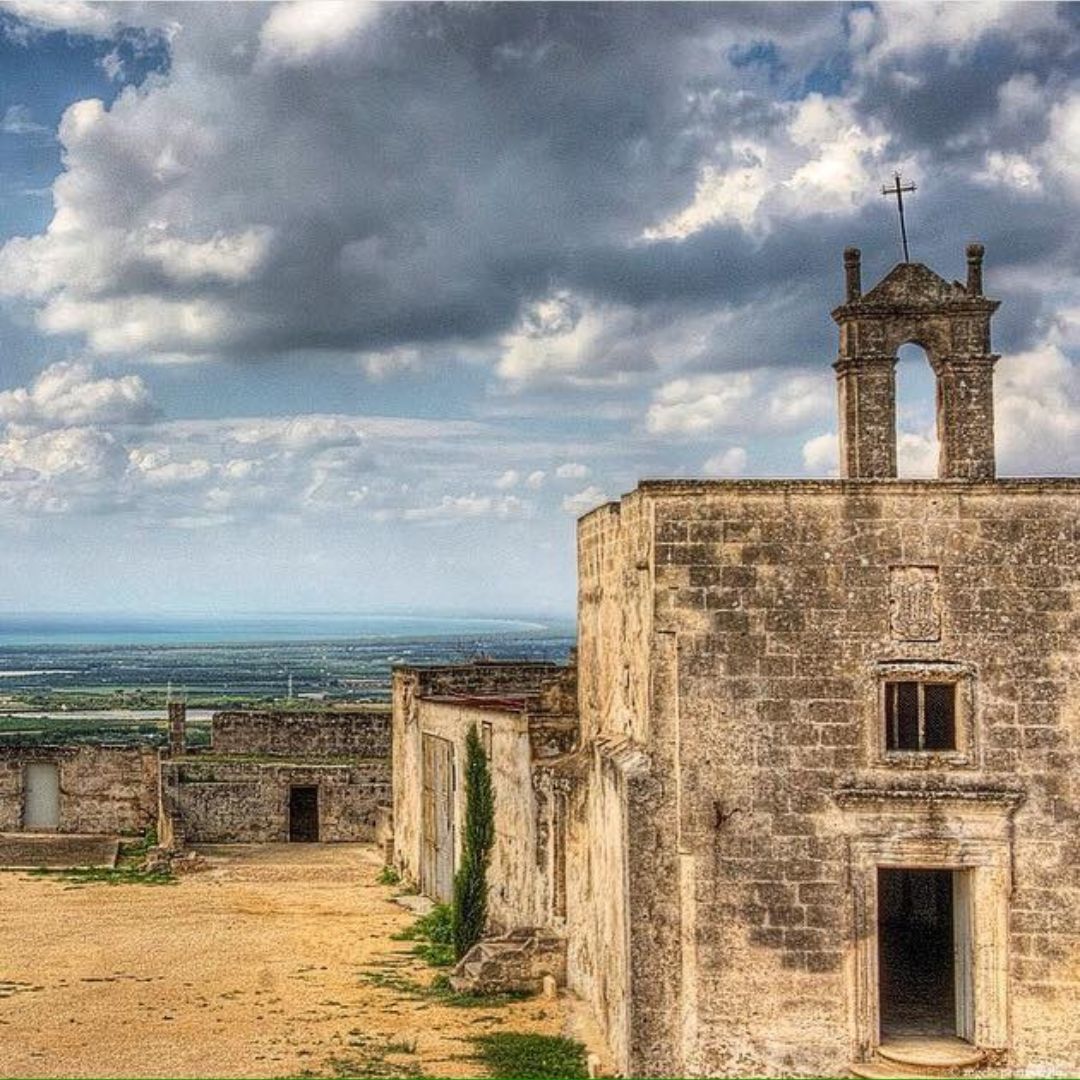
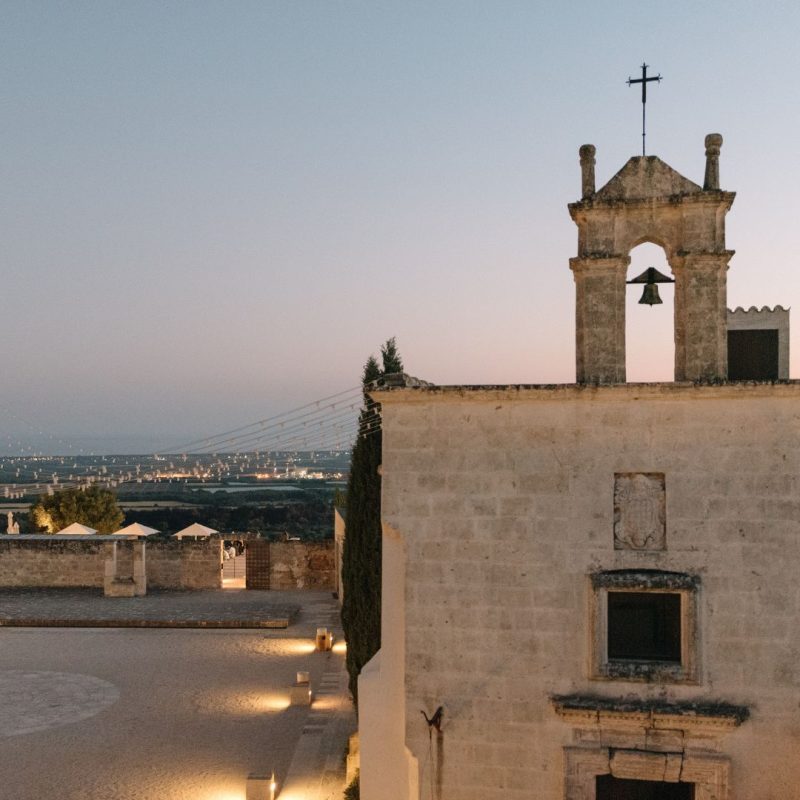
The signs of this distant past can still be clearly seen at the entrance of the masseria: the ruins of the ancient settlement, uncovered during the excavations, have been left visible beneath the floor, a living testimony to the site’s origins.
The walls of the masseria, on the other hand, tell the story of a more recent yet equally significant time. In 2003, the estate, by then partly marked by decay, was acquired by the KIKAU Group of the Montanaro family and entrusted to a major restoration project led by the Earthplan studio.
The intervention breathed new life into the stone, consolidating the façades and restoring the original spaces while embracing a contemporary vision. Rooms that once hosted agricultural activities were transformed into elegant, understated suites; the old olive mill and communal areas were adapted to host events and wine tastings; and an infinity pool was designed to blend seamlessly with the landscape, without disrupting its harmony.
The restoration followed a clear principle: to preserve the historic soul of the masseria while equipping it with everything needed for today’s hospitality. This is why Amastuola succeeds in being a place where the authenticity of the past can still be felt, while offering the comfort of modern living.
Il Vigneto-Giardino: Un Paesaggio che Diventa Arte
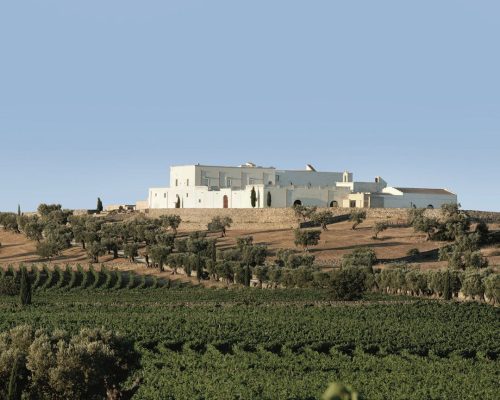
If the walls of the masseria speak of centuries and generations gone by, it is the vineyard surrounding it that represents its living soul—its contemporary identity. Not just cultivated land, but a true cultural landscape shaped by the poetic vision of Spanish landscape designer Fernando Caruncho, one of the most acclaimed internationally.
Caruncho, renowned for his geometric gardens and for using light as a design element, transformed Amastuola’s 100 hectares into a one-of-a-kind vineyard-garden. His works, spanning Europe, the United States, and Japan, are marked by a profound spiritual dimension: the harmony of lines, the dialogue between nature and architecture, and the pursuit of essential beauty.
The undulating rows of vines ripple in rhythmic harmony, evoking the waves of the sea and reflecting the Mediterranean light. It is a landscape where art, agriculture, and nature converge, where geometric order meets the vitality of the Apulian soil.
“…the waves of time that have passed over this place since ancient times.”
– F. Caruncho
Gli Ulivi Secolari: Monumenti Viventi
Beside the vines, majestic and silent, rise centuries-old olive trees, some more than eight hundred years old, true living monuments sculpted by time. Their twisted trunks tell a millennial story, offering shapes that are almost sculptural to the eye.
These trees are not merely a picturesque backdrop: the landscape project at the Masseria has both enhanced and reinvented the rural scenery itself. The olives, recovered and repositioned in 24 agrarian islands along the paths and scattered throughout the vineyard, create a harmonious color contrast between the silvery green of the canopies and the deep green of the vine rows. This is a true historical and monumental restoration, also documented by the CNR of Perugia, which cataloged and dated the trees: many specimens are over 800 years old, with diameters exceeding 2.5 meters.
In this space, agriculture and art intertwine seamlessly, giving life to a living garden where every element is designed to inspire and move.
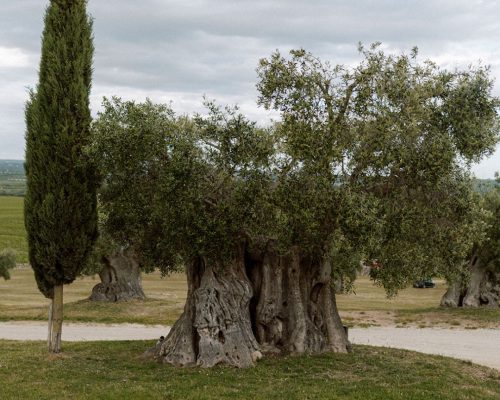
Masseria Amastuola is much more than a tourist destination. It is a cultural landscape, a mosaic of stories and forms, a place where past and future converse naturally. Every stone, every vine, and every olive tree tells the story of centuries of layering that have made this hill a crossroads of civilizations.
Walking among its walls and vineyards is a complete experience: it is the feeling of being in a place that preserves memory while choosing to renew itself with elegance, becoming a symbol of what Puglia has to offer to the world.
For more information on visits and stays, call +39 099 990 8025 or write to [email protected]